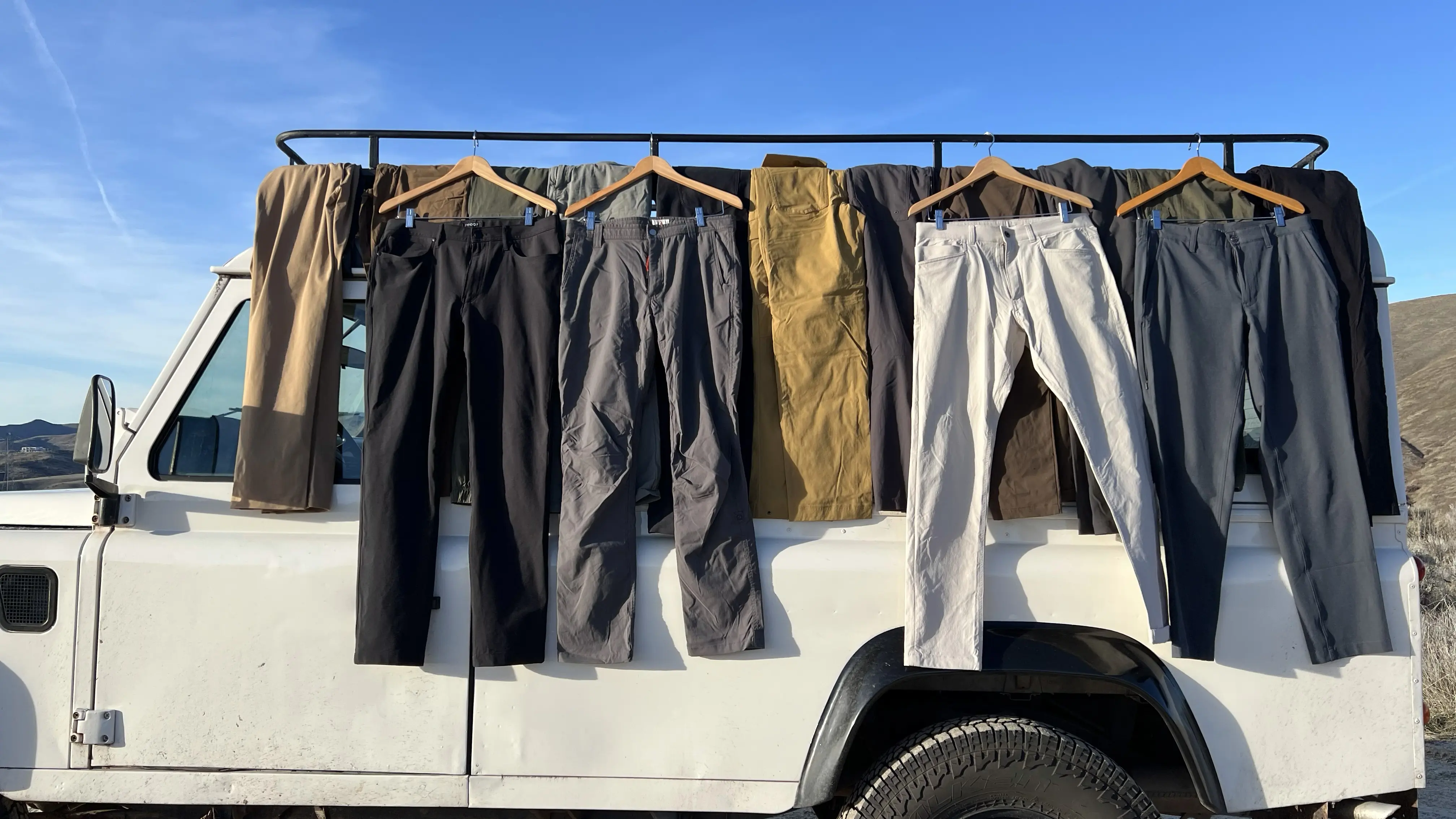With a huge line of products and 900 retail stores around the planet, Germany-based Jack Wolfskin is making waves in sustainable practices.
People might typically think about eco-minded startup brands when the term “sustainability” comes up. But one German company’s commitment to the environment could soon bring its image to the top.
Like other major brands, Jack Wolfskin outfits mountain guides to test gear. The company also leases wind tunnels, pitting its tents against fierce simulated gales. This ensures the practical durability of products in real-life expeditions, whether they be of professional or recreational nature.
Jack Wolfskin: Sustainable Outdoor Gear
With supply-chain transparency, Fair Wear Foundation membership, organic cotton use, a stance against fur and nanotechnology, and responsible down certification (to name a few), Jack Wolfskin evaluates nearly all stages of production. Plus, with more than 900 stores and 4,000 retail outlet partners, Jack Wolfskin’s level of sustainability quickly scales.
Although it has been involved in sustainability initiatives for almost a decade, Jack Wolfskin may not be automatically equated as an eco-focused brand. In a recent interview, the company’s CEO, Melody Harris-Jensbach, said Jack Wolfskin did not speak much about its programs “because for us it was a matter of course.”
She continued, “Maybe that was a mistake, and we were too modest the past few years.”
Modesty aside, Jack Wolfskin has quietly risen as an influential proponent of sustainability. With a large R&D staff, thousands of catalog products, hundreds of stores, and intimate knowledge of its product supply chain, the company’s size allows it to catalyze significant change in the industry.
Harris-Jensbach stated that going forward Jack Wolfskin will reinforce its eco-message. It will highlight initiatives as well as products like its Ecosphere jacket, which is made with a recycled outer fabric and the very first recycled membrane.
Moreover, the fabrics of Ecosphere products are completely PFC-free. Through the development of sustainable products like these, Jack Wolfskin proves its commitment to the goal of eco-friendly designs and technology.
For some insight, GearJunkie spoke with Gerold Ringsdorf, a 30-year veteran of the brand, and Jack Wolfskin’s U.S. head, Dana Kafka. They noted nine areas of current practice and the company’s vision looking forward.
Jack Wolfskin: 9 Sustainability Standouts
1) Fair Wear Foundation Member & Leader Status
In 2007, Jack Wolfskin created a code of conduct to make certain that all of its manufacturers and producers treated employees fairly. This code ensures fair pay, appropriate working hours, workplace safety, bans on child and forced labor, and more.
In 2010, it became a member of the Multi-Stakeholder Initiative Fair Wear Foundation — an organization that focuses on fair, safe, and healthy working conditions in the garment supply chain — to verify its engagement externally and be even more credible.
Then in an act of corporate transparency, it published a detailed list of its production partners, which is a first for the outdoor industry. Its choice to treat workers fairly and transparency resulted in a “Leader Status” in 2015 and all following years from the Fair Wear Foundation.
2) Battle Against PFCs
There is a push in the outdoors industry to eliminate widely-used PFCs (perfluorocarbons), which are chemicals used in treatments on jackets and other garments to repel water. PFCs have potential toxic consequences for both humans and also for the environment at large.
Jack Wolfskin began eliminating PFCs a few years ago, and by this summer the brand notes that almost 90-percent of its clothing will be PFC-free. By 2020, the company is committed to leaving all PFCs behind in favor of more sustainable treatments and technology alternatives.
3) Sustainable Production Using bluesign System
A set of standards from bluesign is incorporated into all aspects of Jack Wolfskin’s supply chain, ranging from the chemicals used for making raw materials, to production materials, to the finished product on a store shelf. (Steps in the manufacturing process undergo auditing to ensure safe and environmentally-friendly practices.)
The goal? To obtain 100-percent certification of all fabrics used in apparel and outerwear by 2020.
4) Transparent Supply Chain
It takes dozens of suppliers to produce a single product. Jack Wolfskin illustrates this on its page about the Altis Women Softshell Jacket. (For this single piece, 12 suppliers work with 54 subcontractors to forge, build, stamp, weave, dye, and sew the various parts that compose a jacket.)
In revealing this process, Jack Wolfskin hopes to educate consumers, its staff, and its partners on the intricacies involved in the production, and the myriad sustainability issues that could arise in the process of making gear. Through this transparency, Jack Wolfskin proves its commitment to eco-minded practices.

5) Zero Discharge Program
The Zero Discharge of Hazardous Chemicals (ZDHC) program has a mission to eliminate the discharge of hazardous chemicals in textile and footwear production. Jack Wolfskin aligned with the group in 2012, rendering it the first outdoor brand to commit to the ZDHC program with an aim to phase out any use of hazardous chemicals by 2020.
6) Animal Welfare
Animal welfare is a concern to Jack Wolfskin. The company has long assured that live feather plucking and foie gras processes are not involved in the procurement of its down. In 2015, the company began a switch to the Responsible Down Standard (RDS) from the Textile Exchange Organization.
Though some of its Artic parkas have a fuzzy rough, the company does not use real fur. Jack Wolfskin is a member of the Fur Free Retailer Program as it considers breeding animals for fur “not morally justifiable.”
Additionally, while leather is a primary material for footwear, Jack Wolfskin employs strict standards for any treated leather to ensure sustainable practices. It bans material derived from any species threatened due to leather production.
7) Recycled Materials
Recycled polyester is utilized in Jack Wolfskin outerwear. Furthermore, the company cites that it uses exclusively bluesign-certified recycled materials.

8) No Nanotechnology
Jack Wolfskin does not use nanotechnology in its products. The brand stopped use nanotechnologies in 2010, as “there have not yet been any definitive long-term studies into their effects on the human body that could explicitly exclude any possible risks.”
9) Organic Cotton
Like other brands in the outdoors industry, Jack Wolfskin eliminated non-organic cotton from its line. The company has used certified organic cotton since 2013.
The benefit? Organic cotton uses less water to grow. Plus, crops are not treated with pesticides, insecticides, herbicides, or GMO processes.
–See more details on Jack Wolfskin’s corporate and environmental responsibilities.








